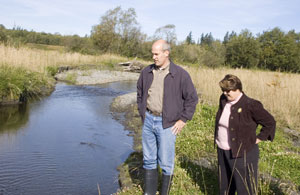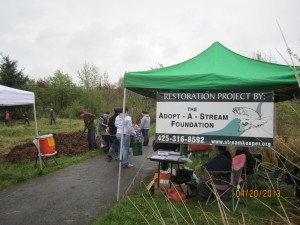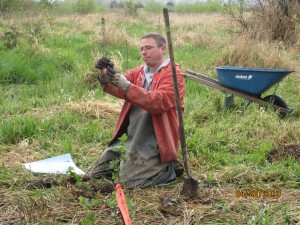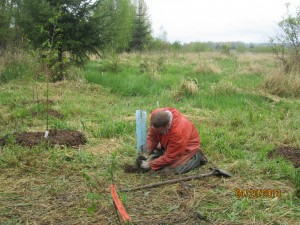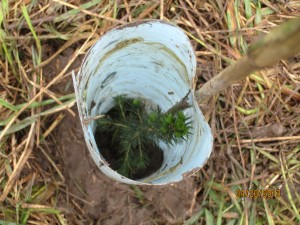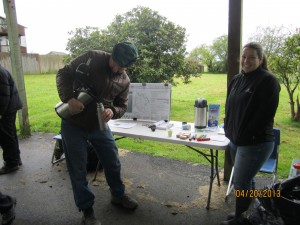Source: Indian Country Today Media Network
Native Americans would learn skills to launch employee-owned businesses under a pilot program the Northwest Area Foundation is funding. A $300,000 grant to the Democracy Collaborative Foundation Inc. (DCF) of Cleveland will provide six Native American organizations with deep, hands-on learning in the Evergreen Cooperatives model of worker-owned enterprises. The grant to DCF is one of 48 worth $4.9 million the Foundation announced in the first quarter of 2013 aimed at building assets and wealth through job creation, small business development, and personal financial education.
“Employee-owned cooperatives have shown great success in moving low-income workers to living wage careers. We believe that such community wealth-building strategies offer great potential for prosperity in Native American communities,” said Kevin Walker, president and CEO of the Northwest Area Foundation. “The portfolio of grants we’ve announced include many innovative approaches to creating new jobs and financial opportunities to reduce poverty in Latino, refugee, minority, immigrant, and low-income communities within our region.”
The Foundation has committed a minimum of 40 percent of its grant portfolio in 2013 to Native American programs and Native-operated nonprofit organizations working to build community and individual financial know-how, access to capital, and entrepreneurial skills. A copy.5 million grant to the Seventh Generation Fund for Indian Development Inc. is aimed at strengthening the influence of a nonprofit network of Native American organizations in Idaho, Montana, North Dakota, and South Dakota. This pilot program will offer small grants, project training, advocacy, and peer-centered learning.
Additional grants to support asset building in Native American communities include:
Economic Policy Institute of Washington, D.C., received copy00,000 for policy research that will call attention to unemployment rates and the need for job creation for Native Americans.
Makoce Wasté Development Corporation of Rapid City, S.D., received copy00,000 through its fiscal sponsor United Tribes Technical College to create jobs, fund economic development, and purchase lands in the Black Hills for the Lakota-Dakota-Nakota people.
Minnesota American Indian Chamber of Commerce of Minneapolis received copy00,000 over two years to develop a comprehensive Minnesota American Indian Business Directory and to create a “Buy Indian Policy.”
Grants to build assets and wealth in other communities include:
Amos Institute of Public Life of Des Moines, Iowa, received $200,000 over two years to expand the Project IOWA program that helps low-income workers move to living wage jobs.
Craft3 of Ilwaco, Wash., received $350,000 to strengthen the leadership and organizational ability. Funding will also increase financial services, including business and consumer loans, provided to rural and Native American communities.
Hacienda Community Development Corporation of Portland, Ore., received $200,000 over two years to build assets of low-income Latinos through micro-enterprise, home ownership, savings, and strong credit scores.
Mountain States Group Inc. of Boise, Idaho, received copy80,000 over two years for the Micro Enterprise Training and Assistance (META) program which provides business training and assistance to low-income and refugees entrepreneurs in the green energy industry.
Nexus Community Partners of St. Paul, Minn., received $500,000 over two years for an initiative to create living-wage jobs and build the financial abilities of low-income workers on St. Paul’s East Side.
OneAmerica of Seattle received $200,000 over two years to launch a pilot program that combines financial literacy training for low- and moderate-income immigrants pursuing citizenship, with the goal of improving prospects for economic opportunity and full integration for this growing community, including eventual access to business training, loans and partnerships with financial institutions.
Stairstep Foundation of Minneapolis received copy00,000 over two years to recruit, support, and advocate for low-income people of color to work in living-wage construction industry jobs.
Grants to support leadership and organizational ability include:
Headwaters Foundation for Justice of Minneapolis received $500,000 for collaborative planning, leadership development, community problem-solving and collective action among five regional networks of African American Leadership Forums in five cities: Minneapolis-St. Paul, Minn.; Seattle; Tacoma, Wash.; Portland, Ore.; and Des Moines, Iowa.
For a full list of the 48 grants the Northwest Area Foundation announced in the first of 2013 quarter, visit www.nwaf.org/content/firstqgrants13.
Read more at http://indiancountrytodaymedianetwork.com/2013/04/19/300k-northwest-area-foundation-grant-help-launch-native-owned-businesses-148903



